Cook et al. (2024)
The economics of Housing & Homelessness
This presentation also includes parts taken from the following papers
Soltas (2024)
Schwartz (2021)
How would you frame this paper?
What mechanism would you like to have seen explored further?
What is an alternative identification strategy?
What would scaling this experiment look like?
Standard Discussion Questions
Reflection Questions
What are the relative benefits of Project-based Housing Subsidies?
To what extent does the paper achieve it's aim?
"This paper evaluates the tradeoffs that policymakers face when choosing where to provide affordable housing"
Inclusionary Zoning
Low-income Housing Tax Credits
Community Development Grants
Utility for person i of housing choice j
Housing Unit Characteristics
Rent
Moving Indicator
Affordable Housing Indicator
Moving Indicator
Unobserved Component Specific to the Unit
Error Term
Set of All Possible Utility Functions
Set of Utility Functions Specified in Equation 1
Executive Office of Housing and Livable Communities
Developers
Application
Investors
Equity
Tax Credits
THe Essence of the Paper
"Why does household income explain so little of the patterns across neighborhoods?"
Motivation
"One tradeoff that has received less attention is that where affordable housing is built can affect who receives assistance if households have heterogeneous preferences for neighborhoods."
Preferences
Allocation Mechanism
Neighborhood
Insight
"Find that eligibility requirements based solely on current income are limited in their ability to effectively target based on persistent need."
"Once [one] subset[s] to the left tail of the income distribution, the remaining differences in current income are a poor predictor of other proxies for persistent need such as education, longer-run income, and childhood family income."
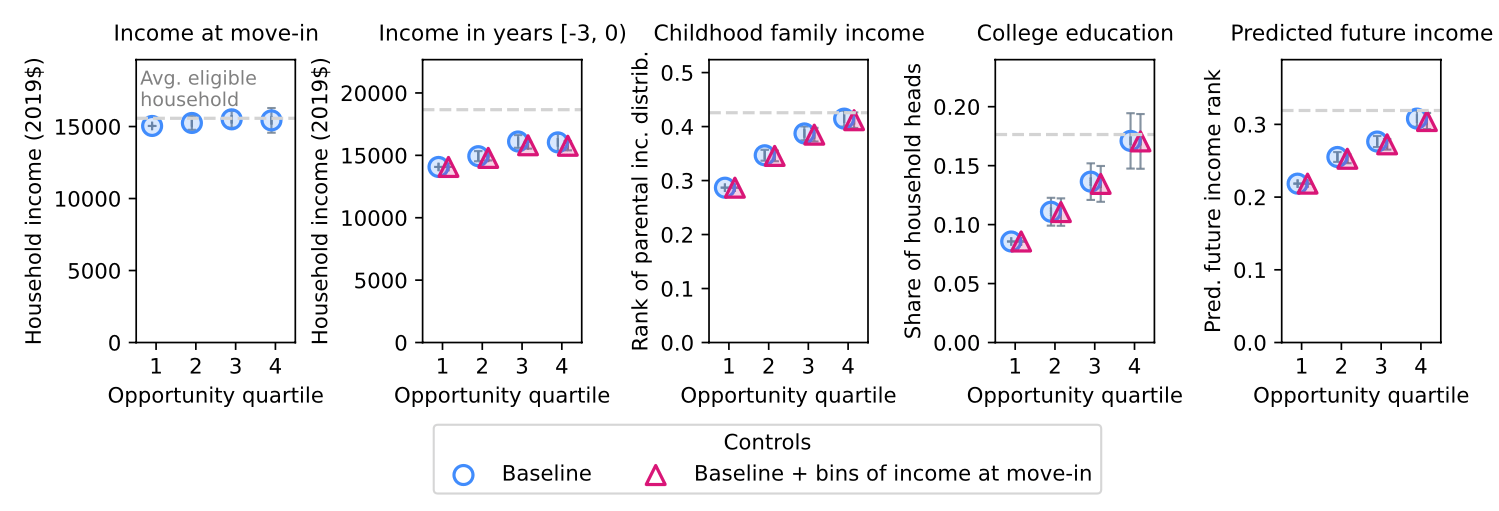
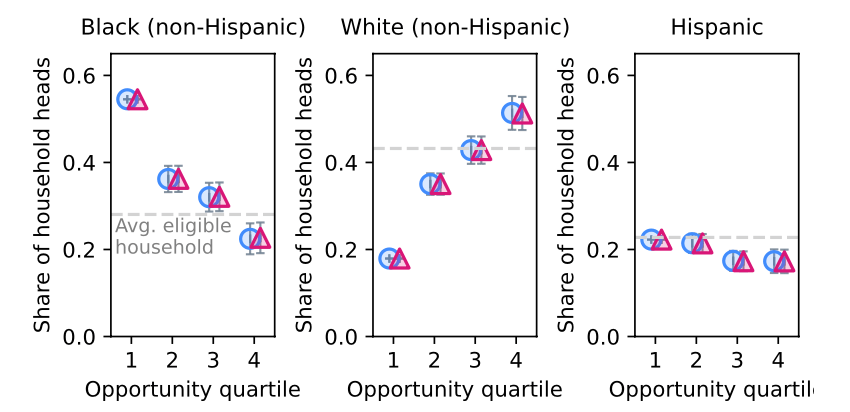
Low-Income Housing Tax Credit Tenants
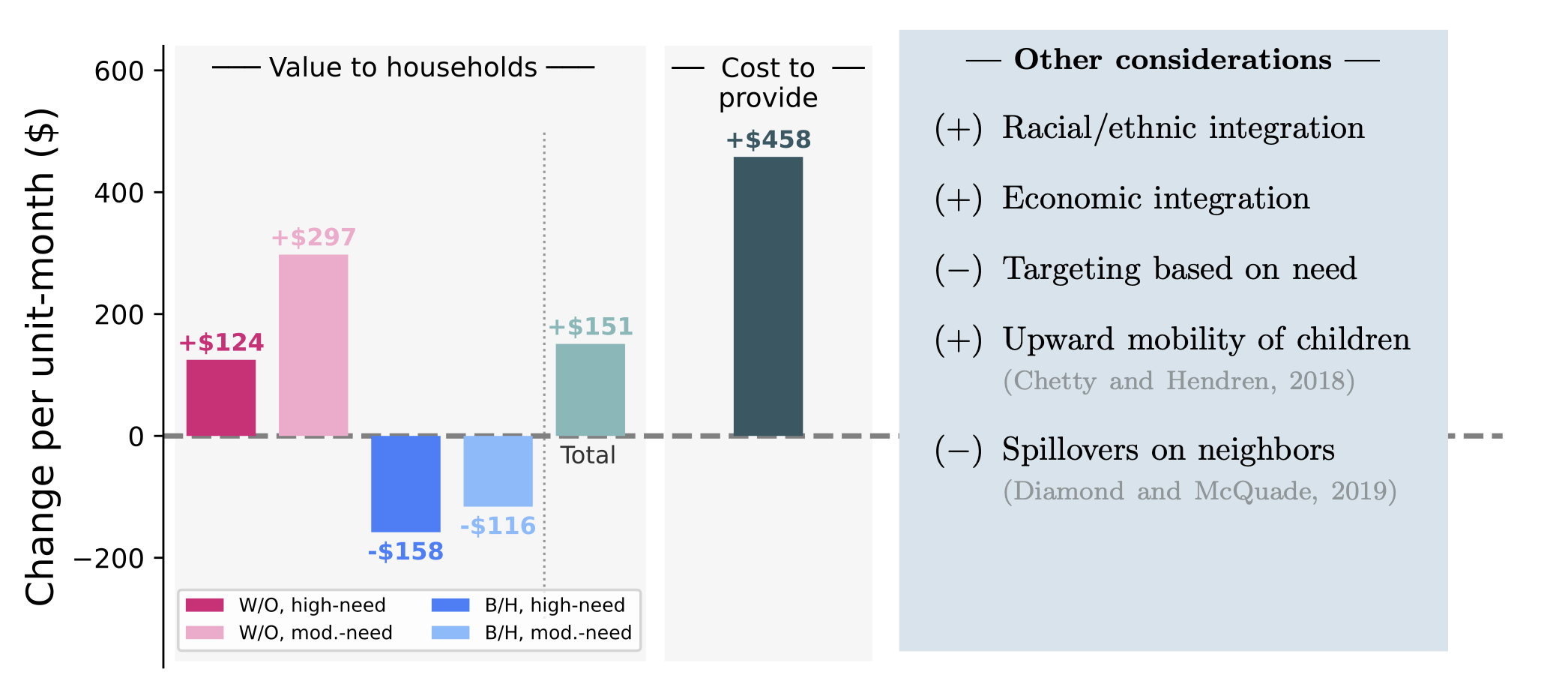
Net Benefits
Background
Established by the Tax Reform Act of 1986
Each credit reduces federal income tax credits by $1
Number of credits depends on
Cost
Location
Proportion of Units Occupied by Low-income households
"More than one quarter of all tax- credit projects placed in service from 1987 to 2018 received a basis boost because of their location in a difficult development area or a qualified census tract"
Excess demand for tax credits in 2017
In 2017 applied for 2.3 Billion in tax credits (2.4 times the amount allocated)

- Kansas Housing Resources Corporation
HFAs are expected to award the minimum amount of tax- credits necessary to make the proposal financially viable
Schwartz (2021)
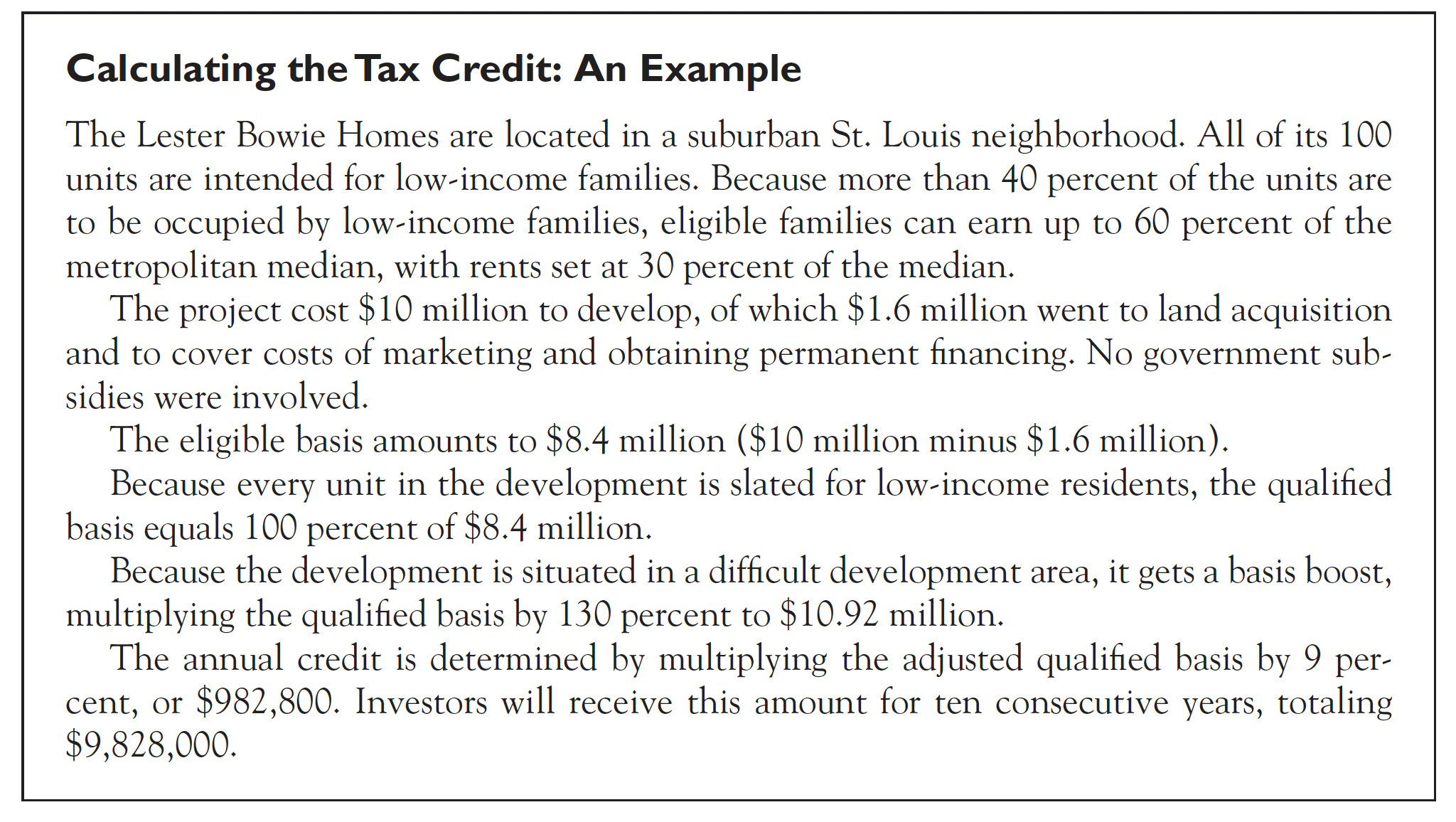
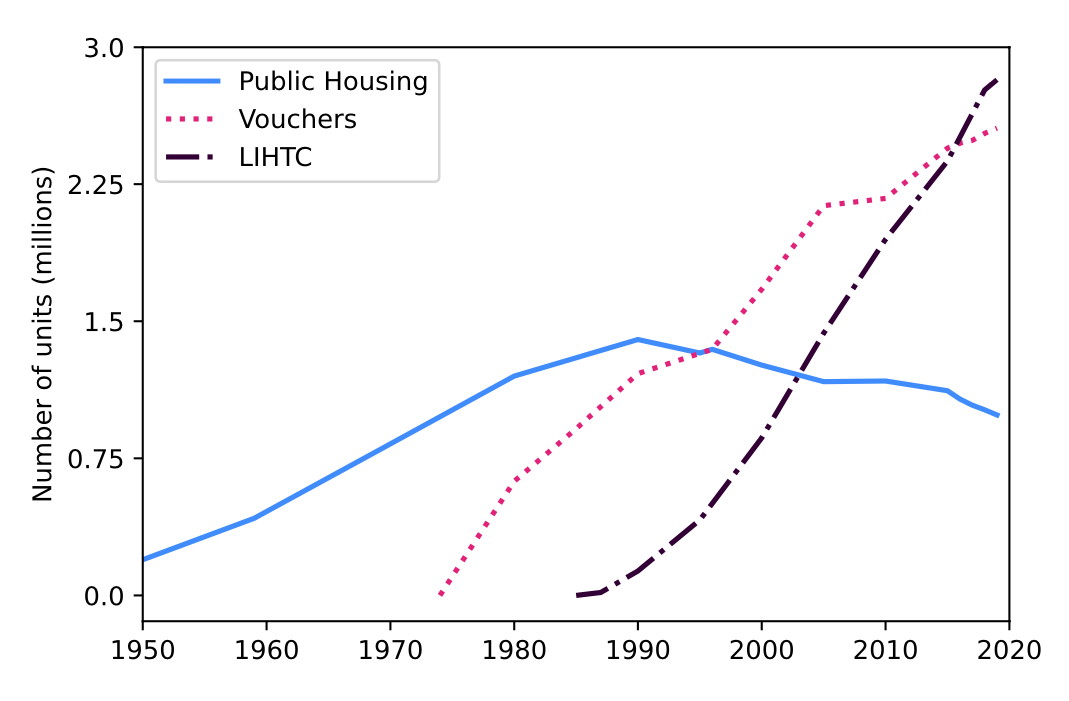
"The Low-Income Housing Tax Credit (LIHTC), has funded one in five of all new U.S. multifamily units since 1987 through grants."
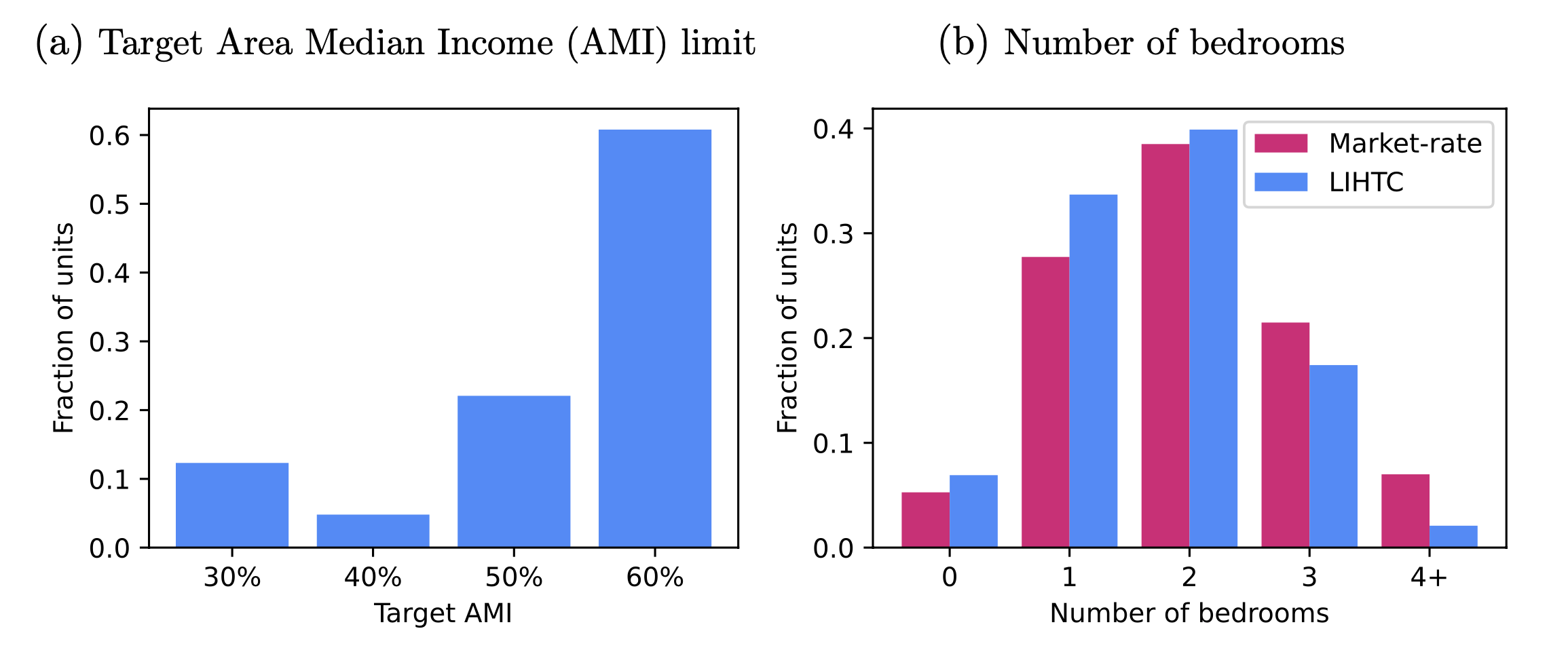
Income Limit Threshold
Bedroom Count
Supply
"Developers respond to subsidy awards mostly by retiming investment, rather than by producing net new units"
"I find small causal effects of winning on development: 75 percent of applicant parcels would be developed within ten years if they were to lose. Instead, the LIHTC pulls development forward in time, and it replaces some market-rate units with (slightly) subsidized ones."
"Find that a ten-percent reduction in the net-of-tax cost of low-income housing development leads to an increase in applications of at least three percent. The model-based implication is that entry costs are high, as many developers apply only when the tax credits cover almost the entire construction cost of low-income housing, even when these units command near-market rents."
"Due to displacement, the fiscal cost of the LIHTC is about $1 million per net new unit on average."
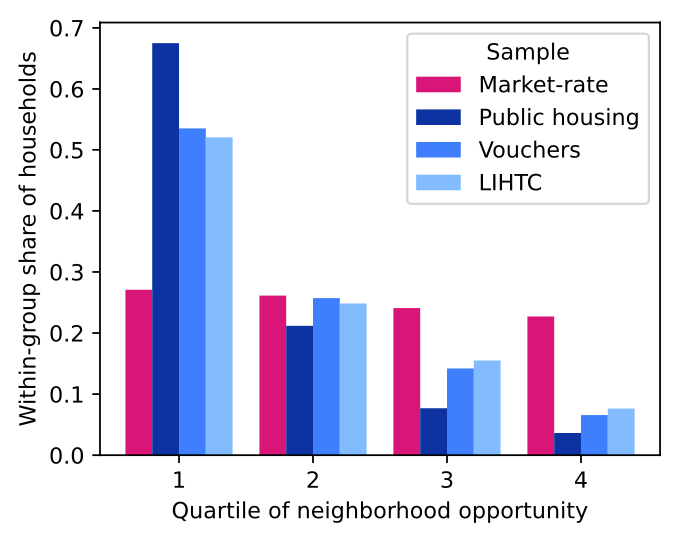
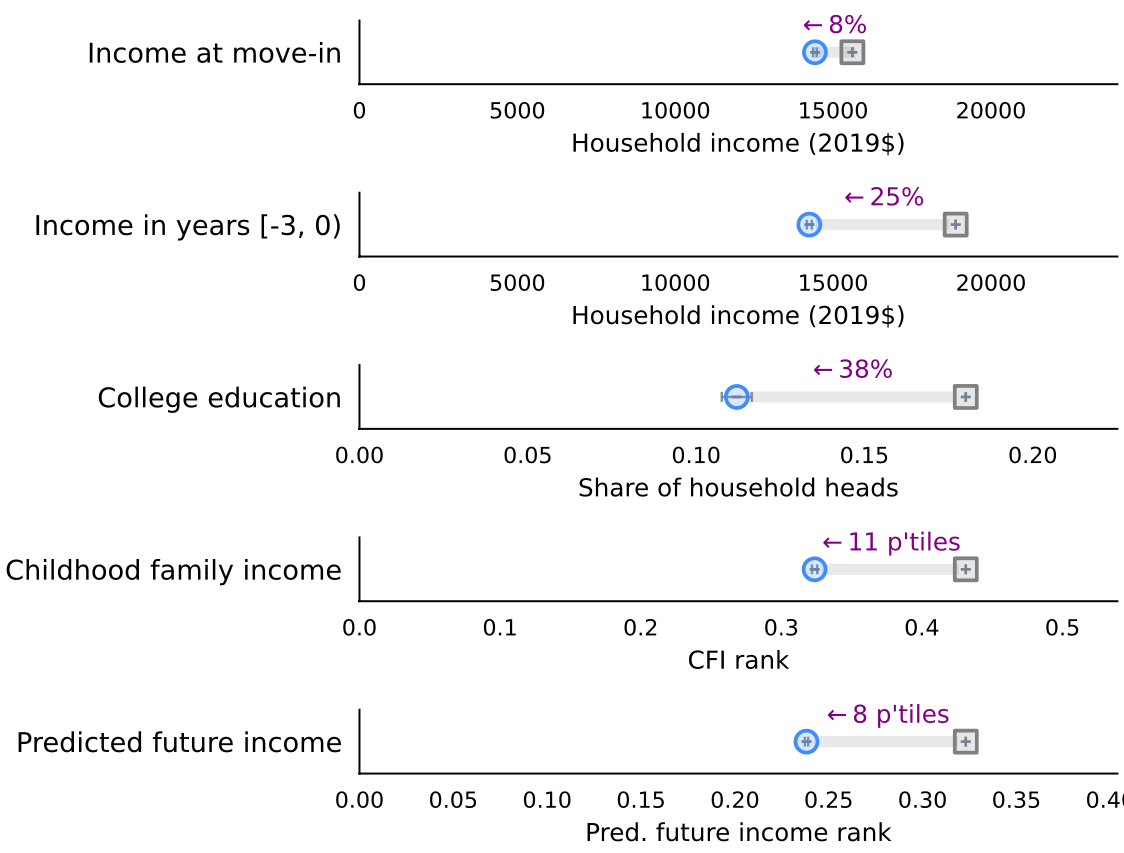
Market Rate Comparisons


Low-Income Housing Tax Credit Tenants
Simulations
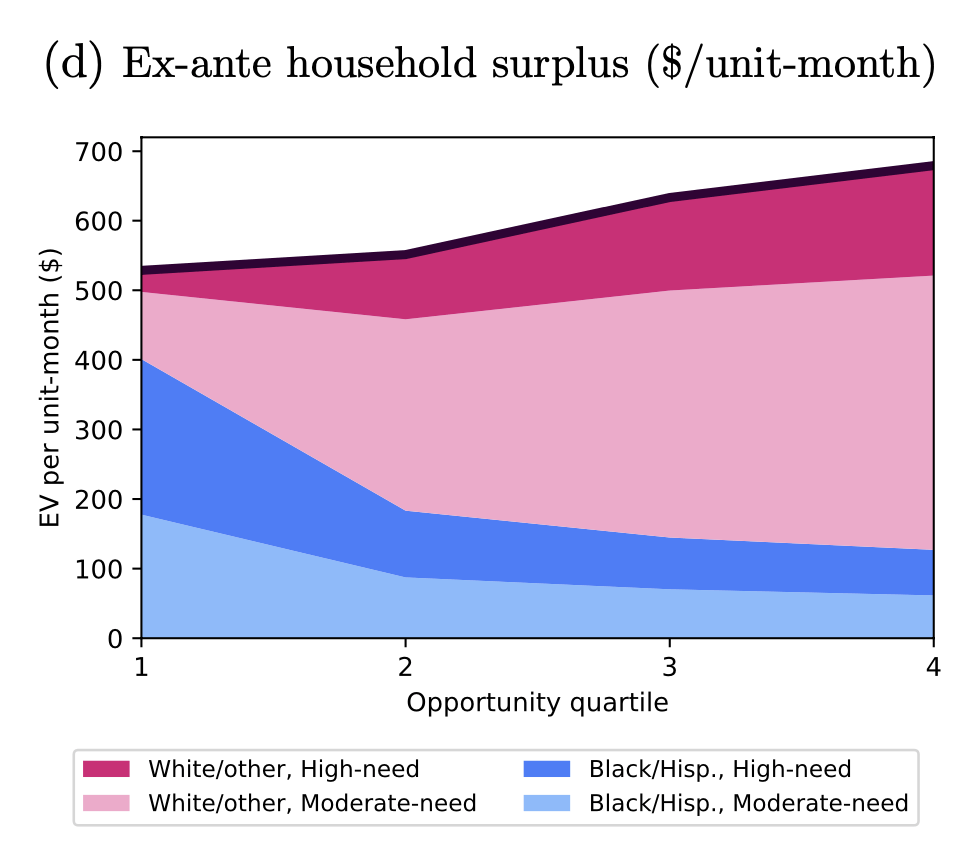
What factors does this figure capture?
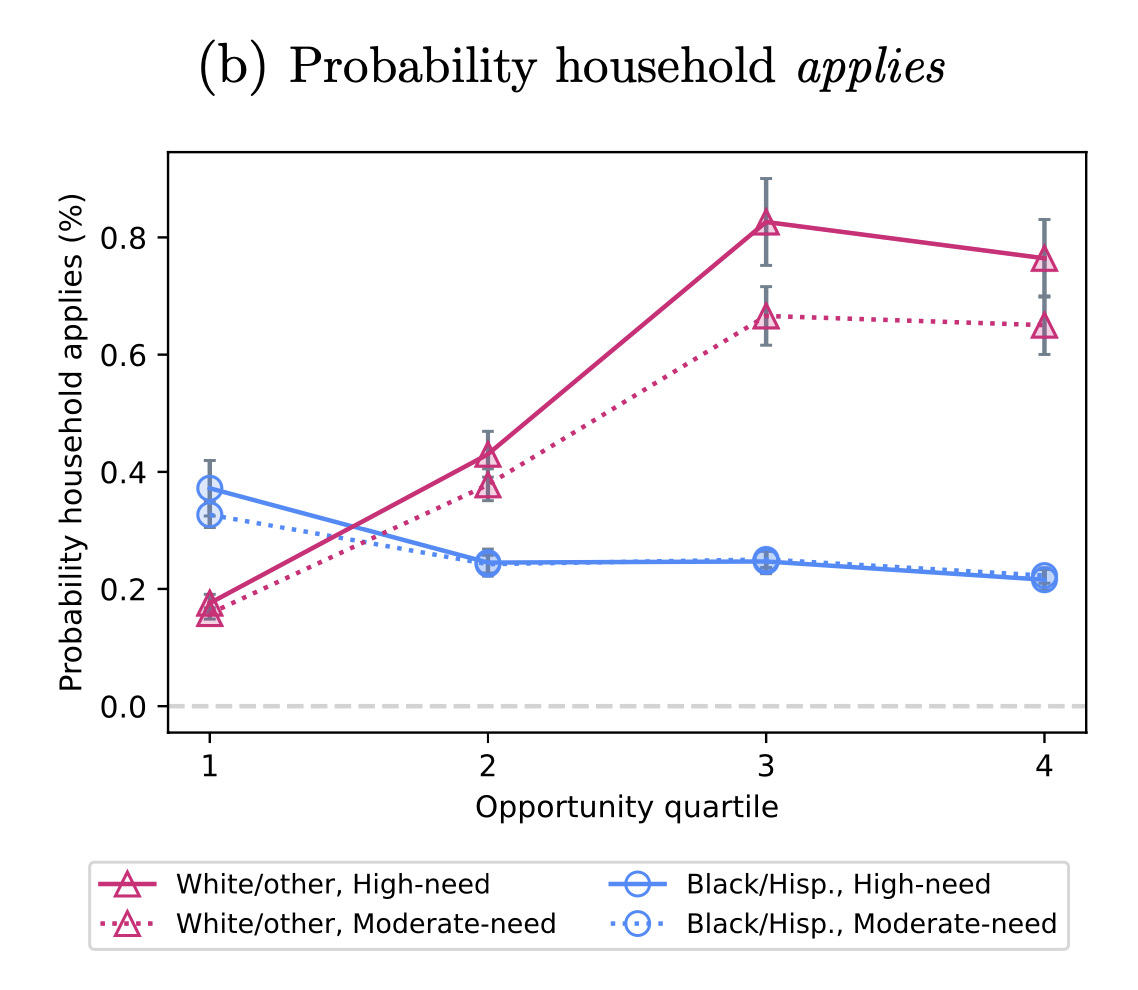
"The average Black/Hispanic applicant is slightly less likely to apply for a new unit in the top quartile of neighborhood opportunity than in the bottom quartile. This reduction is primarily because of the lower share of same-race/ethnicity residents in these neighborhoods, which outweighs the improvements in school quality, transit access, and other amenities."
Reflect: Does the likelihood of applying capture only ones preferences?
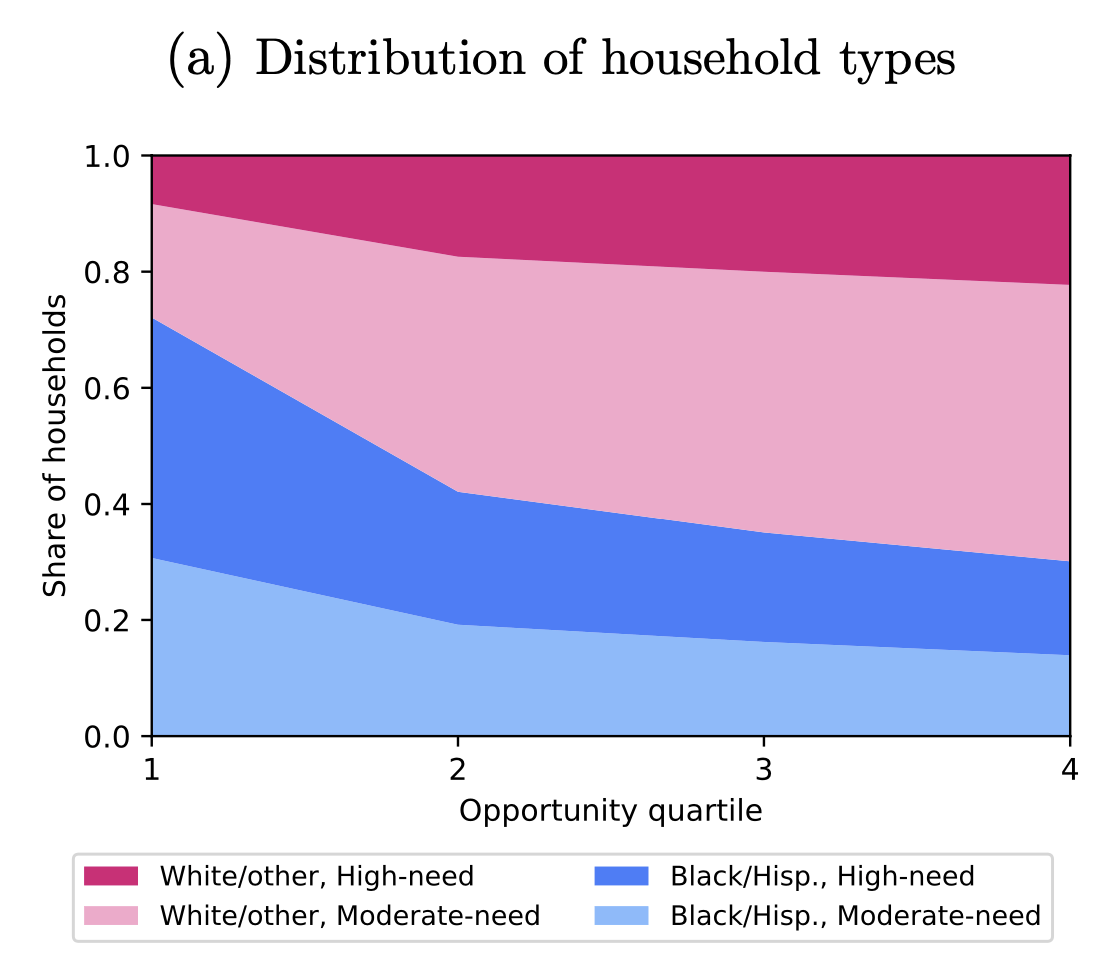
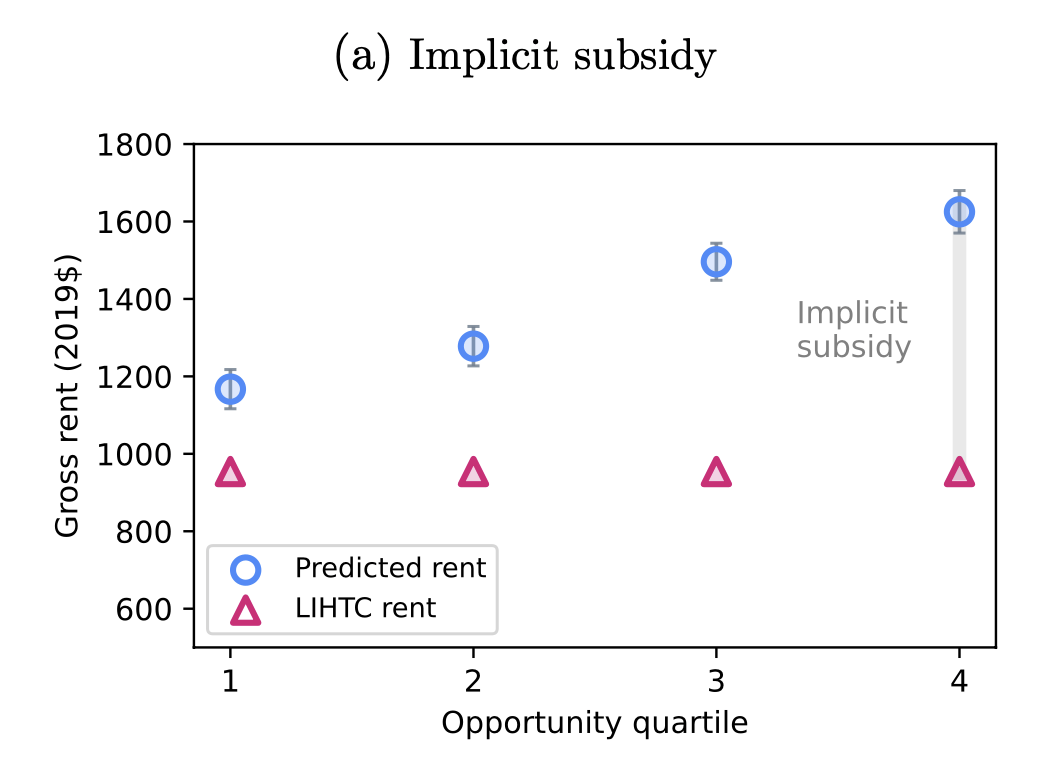
Rent Savings
"Average monthly LIHTC rents are about 12 percent below my estimates of potential market rents for new units in the same neighborhoods, though the rent savings vary greatly across neighborhoods."
